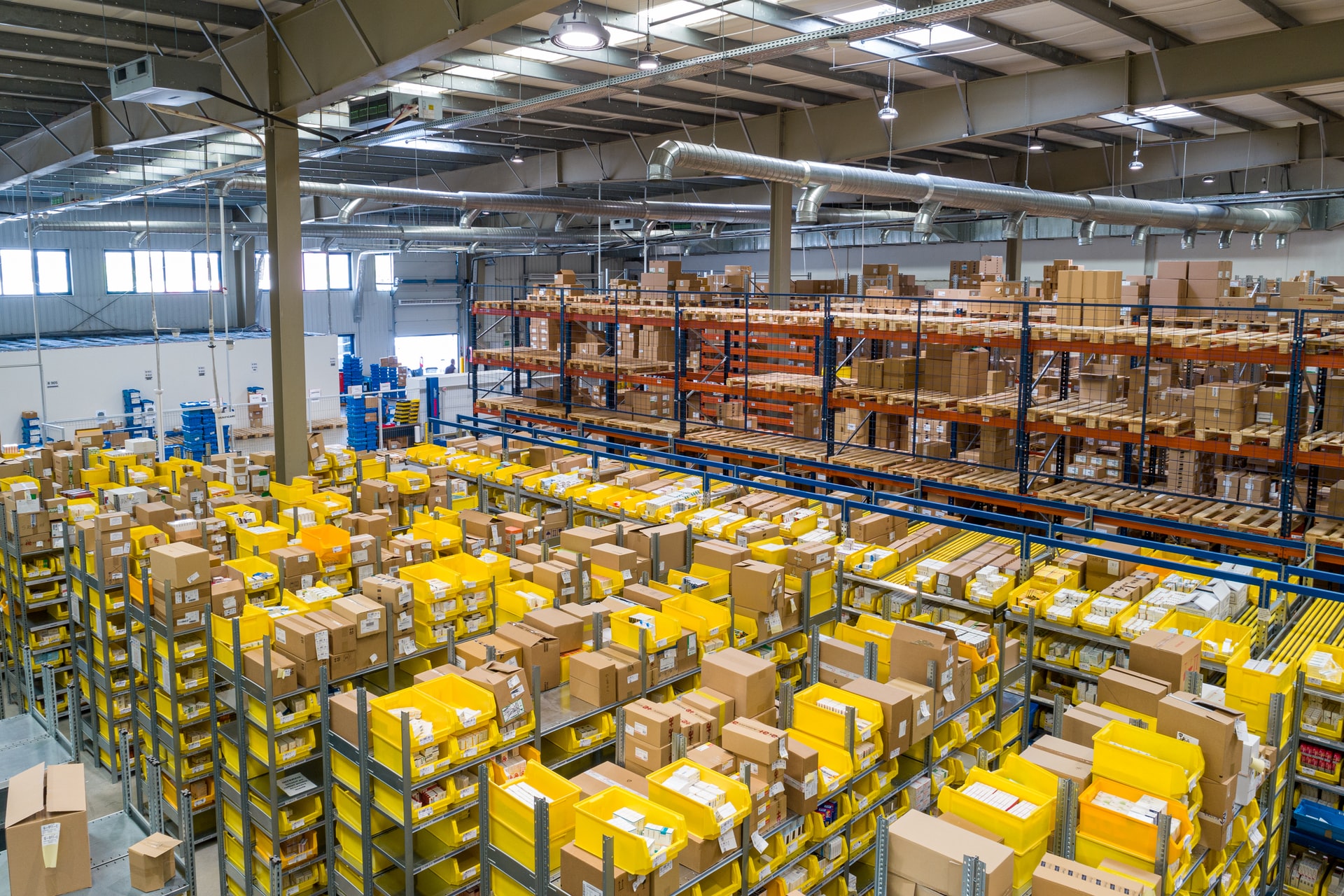The pandemic has changed many of our habits, especially our shopping habits: the Spanish e-commerce sector grew by 35% in the last year of the pandemic. The state of alarm caused many consumers to switch to online shopping, even though they had been reluctant to do so before. For companies, this change in consumer behaviour meant a need for improvements in the transport of goods, as the regular customer is used to products arriving quickly and with the least inconvenience to the customer.
As a result, logistics centres have become increasingly popular in recent years. But what is a logistics centre, is it the same as a distribution centre, are there different types or do they all serve the same purpose? In this post we explain everything you need to know about them.
First of all… what is a logistics centre?
A logistics centre, physically, consists of an infrastructure in which different products from several different companies are received, stored and shipped. Sharing between companies is usually the norm when it comes to logistics centres, but a company can have a private logistics centre.
It is difficult to define the exact function of a logistics centre, as, in addition to storage, it is also responsible for the distribution and transport of goods, monitoring each and every one of the actions carried out with the stored material.
All the departments that form part of the logistics centre must be in constant communication and fully coordinated so that the entire process chain works correctly, as it is in these centres where the quality standards of the products are checked. In some cases, they even take care of the packaging, but this is not common.
Now, from the description of a logistics centre, it could be confused with a warehouse, but are they the same?
Logistics centres or warehouses?
We have already mentioned that one of the tasks of logistics centres is the storage of goods, which could be confused with the function of a warehouse. Both elements are part of the complete logistics process, but they have some decisive differences:
– The function of a warehouse is to keep the goods in a closed and secure place; no other tasks are required of them. A logistics centre, however, also takes care of the flow management, the receipt and delivery times and the correct dispatch to the destination.
– The logistics centre functions as an intermediary between the supplier and the customer. They serve, for example, as a returns handling point, so the centre-customer contact is very important. The warehouse has no contact with any user or customer of the products it stores.
– One of the fundamental differences between logistics centres and warehouses is the size: the former are designed so that the goods do not remain there for long, only the time necessary to be able to classify them and send them to the warehouse, a larger space, where they will remain in inventory for the stipulated time (this can be weeks, months or even years). The logistics centre must be responsible for guaranteeing the stock, and the warehouse must be responsible for stocking it.
In short: the logistics centre receives the goods, identifies them and carries out all the transport and distribution formalities to the warehouses, which will be responsible for accepting them and storing them in the best conditions for the necessary time.
Types of logistics centres
Now that we are clearer about what logistics centres are, it is time to ask ourselves if they are all the same or serve the same purpose. The truth is that there are several types of centres depending on the functions they are to perform. Thus, they can be classified into several types:
– Logistics Activity Zones (ZAL)
ZALs are centres located in maritime or port areas. The objective of this location is to be able to receive goods by sea or river. It is the neuralgic point, since the products leave from there to other centres, either by air or land. Normally these zones have excellent connections of one of these two types, or even both, so that the transport process takes as little time as possible. Some of the most important ZALs in Spain (and with the best connections) are those of Barcelona and the Bay of Algeciras.
Maritime transport is one of the most widely used means of transporting goods, so any problem with the connection can lead to severe economic costs for companies and a lack of supplies. An example of this was the famous Ever Given run aground in the Suez Canal in 2021, which stopped supply chains at a global level. The ZALs in Spain followed the news of this ship with concern, as it affected them directly.
– Integrated Freight Centres (IFCs)
IMCs would be the land-based equivalent of ZALs: they carry out all transport, management and distribution to warehouses or other centres by road. Their scope can be both national and international, and their functions include storage, handling or transformation of goods and distribution.
They are usually located near cities or centres with a large population, as management is much more practical.
– Logistics hubs
Logistics hubs are the type of centre that has grown the most since the e-commerce boom; they have privileged locations from a logistical point of view, usually in urban centres or near transport hubs (such as airports). They have large tracts of land. These characteristics lead to faster shipments and better last mile management, as delivery times are shorter.
– Logistics platforms
This type of centre is only responsible for 3 operations: transport, storage and dispatch. They do not produce, handle or check. Platforms would be the type of centre that consumers have in mind when they think of logistics architecture.
– Industrial estates
Industrial parks have a fundamental difference and provide a function that logistics platforms cannot provide: they can produce products. Manufacturing is not an obligation in these types of centres, but it is possible. Many material suppliers locate their centres in industrial parks, so if you locate your company in one, you will have supplies very close by. This proximity often creates a climate of cooperation, so it can be a good place to find partners.
Industrial estates are usually located on the outskirts of urban centres; transporting goods is therefore much easier, as you have access to the main roads. Industrial warehouses also have the necessary infrastructure to produce and temporarily store products.
Why are logistics centres so important?
Unbeknownst to many, logistics centres have played a key role in the pandemic through their product management and delivery services. The rise of e-commerce has also highlighted the need for logistics centres. Consumers are accustomed to easy, fast delivery with hardly any steps to take, and companies are learning to meet these demands.
At Tradisa, we know what we are talking about: we have been offering our distribution and transport services to our customers since the second half of the 20th century. We are an integrated logistics operator in Europe for the automotive, petroleum products and other synergistic sectors such as consumer electronics. If you need global logistics solutions, you can rely on us. You can contact us here to ask any questions or to request information about any of our services.


